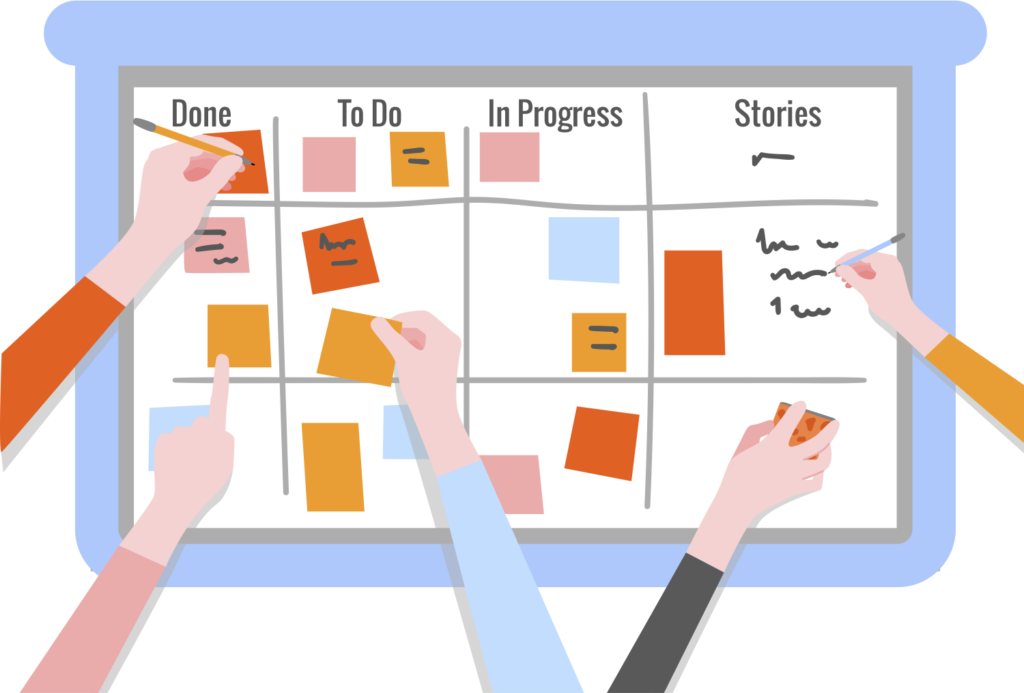In this blog post, we’ll discuss Agile methodology in software development. We’ll explain what Agile is, how it’s used, and provide examples of its success. We’ll also give tips on how to implement Agile in your own projects. This post is perfect for anyone interested in learning more about Agile and how it can improve software development.
Why Agile?
Agile is a popular methodology for software development because it allows for flexibility and adaptability in the face of complex and uncertain projects. Agile emphasizes on continuous improvement, customer collaboration, and delivering working software as soon as possible. This approach allows teams to respond to changing requirements and deliver a final product that meets the customer’s needs and expectations.
One example of a company that has successfully implemented Agile is Spotify. The music streaming service uses an Agile methodology called Scrum to manage their development process. By using Scrum, Spotify is able to deliver new features and updates to their customers at a rapid pace. Additionally, Spotify’s Agile approach allows them to quickly respond to changing market conditions and customer feedback.

What is Agile ?
Agile is a methodology for software development that emphasizes on flexibility and adaptability. Agile teams work in short sprints, usually 2-4 weeks, and deliver working software at the end of each sprint. This approach allows teams to make adjustments and improvements based on customer feedback and changing requirements. Agile methodologies include Scrum, Kanban, and Extreme Programming (XP).
One example of an Agile methodology in action is Scrum, which is used by the development team at Amazon. The team uses Scrum to plan and execute their projects, with daily stand-up meetings, sprint planning, and retrospectives. This approach allows Amazon to deliver new features and updates to their customers at a rapid pace, and also allows the team to quickly adapt to changes in customer needs and market conditions.
How to Implement Agile ?
Implementing Agile requires a team that is willing to embrace change and be open to new ideas. The team must also be able to work in a collaborative and iterative way. Some key steps to implementing Agile include:
- Forming a cross-functional team: Agile teams are made up of people from different disciplines, such as developers, testers, and business analysts.
- Holding regular meetings: Agile teams hold regular meetings, such as daily stand-ups, sprint planning, and retrospectives, to discuss progress and make adjustments as needed.
- Delivering working software at the end of each sprint: Agile teams deliver working software at the end of each sprint, which allows for customer feedback and helps to ensure that the final product meets their needs and expectations.
One example of a company that has successfully implemented Agile is Zappos. The online shoe retailer uses an Agile methodology called Scrum to manage their development process. By using Scrum, Zappos is able to deliver new features and updates to their customers at a rapid pace, and also allows the team to quickly adapt to changes in customer needs and market conditions. Additionally, Zappos’ Agile approach allows for better collaboration and communication among the team members.
In conclusion, Agile is a flexible and adaptable methodology that allows teams to respond to changing requirements and deliver a final product that meets the customer’s needs and expectations. Agile methodologies such as Scrum, Kanban, and Extreme Programming (XP) have been implemented by multiple companies with great success. Implementing Agile requires a team that is willing to embrace change and be open to new ideas, and also willing to work in a collaborative and iterative way.






